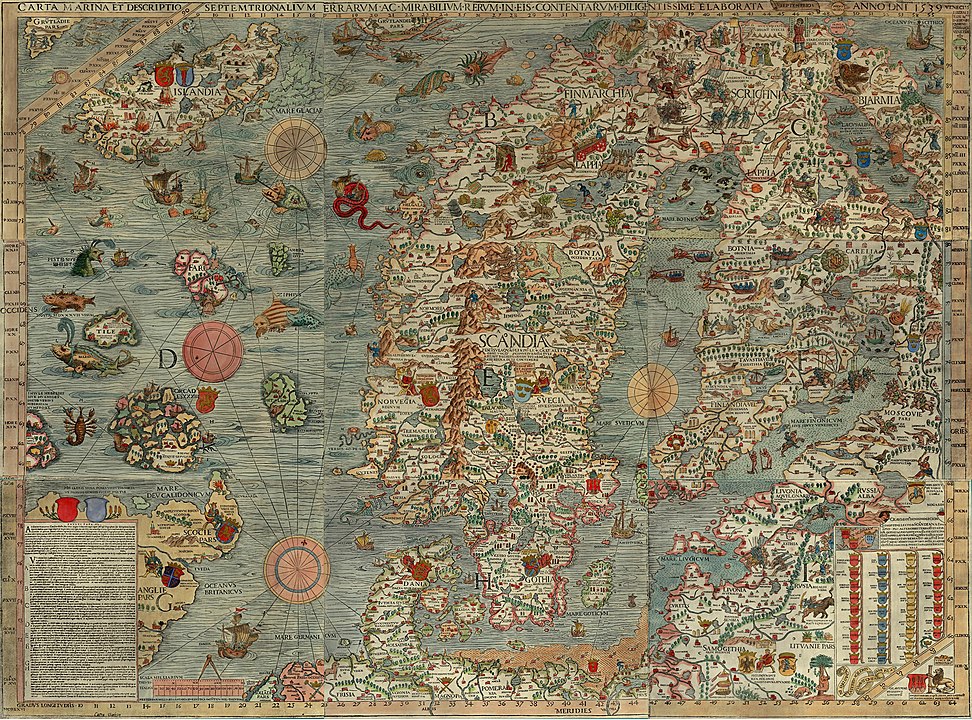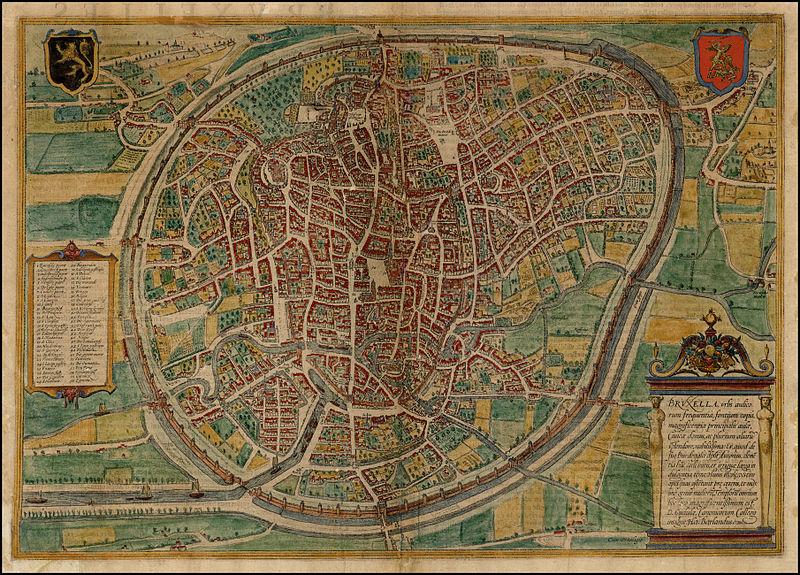(Update) Recently I encountered some single edition maps, and one map and cartographer in particular that seems to better exemplify your question. The cartographer would be Olaus Magnus, and his map the Carta Marina, first published in 1539. (A higher resolution image here)

The entire map is covered in 'rich content' and imagery concerning behaviors of the peoples living in these northern regions. Scenes such as ice-fishing, skiing and reindeer riding are mixed in with elements of myth and legend.
So much information is included on this map that Magnus wrote an accompanying text explaining many of these scenes or vignettes; The Historia, or fully Historia de Gentibus Septentrionalibus, “A Treatise concerning the Northern Peoples.” Though the originals were in Latin and Italian I believe, kimchi lover found a link to an English translation which can be downloaded here. This version unfortunately lacks the vignette drawings which can be seen in the Latin version viewable here. Elements depicted on this map are repeated in later maps such as the Abrahan Ortelius atlas the 1570 Theatrum orbis terrarum and images are repeated in some of Conrad Gessners' early zoological volumes such as the Historia Animalia (Library of Congress versions here)
A later individual whose work also covers aspects of what you are looking for would be Georg Braun.
From 1572 to 1617 he edited the Civitates orbis terrarum, which
contains 546 prospects, bird's-eye views and maps of cities from all
around the world
 (above map or Zurich from same article)
(above map or Zurich from same article)
Though Munster was actually an inspiration of Brauns, I belive the rich detailing of the city maps that Braun did really stands out. The extra details he included that represent the 'rich content' you are asking about included:
- any crest or emblem (coat of arms) that represented the city
- the maps were often drawn in a perspective that lent to a view of the
surrounding countryside
- a representation of local inhabitants, in traditional (or
stereotypical) costume for the time
- and in many cases, a list of important locations within the
city in table form(not visible on this image, but if you look at images of Rome or Venice,for instance, you will find examples of the tables)
- the details on the drawing of the buildings, such as the mills on the
river, the barns in the farms, ect. You can spend hours going over
these images just looking at the minute detail.
Map of Brussels below showing the aforementioned tables of city locations.






